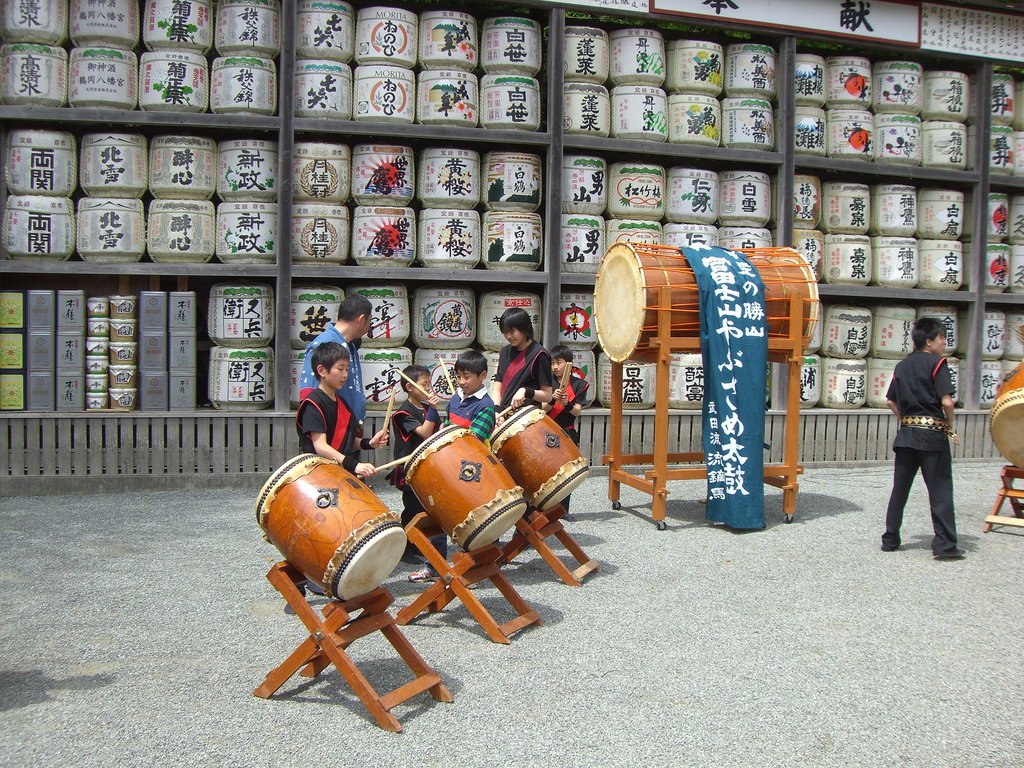
Taiko Drums at the wall of sake
I woke early to sunlight filtering through the rice paper covering my window, then dressed and headed to the main temple building for morning prayers. Myoren-ji looked very much like other Buddhist temples, with an altar bedecked with gold and brocade ornaments. The statue of Buddha was beautifully lit and the air was heavy with the smell of incense.
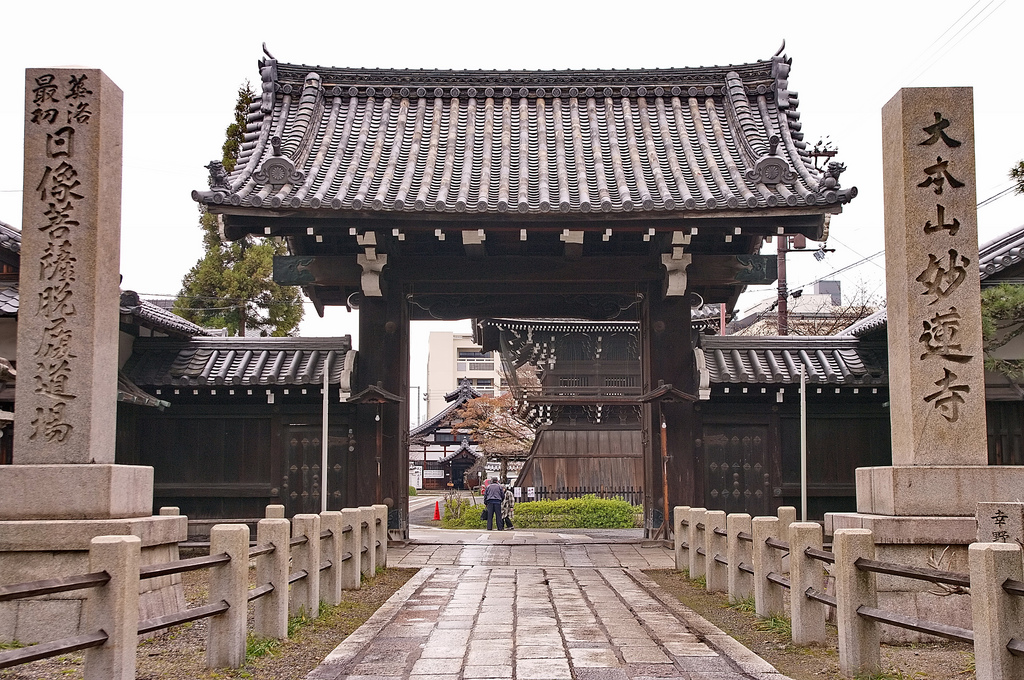
妙蓮寺 Myoren-ji Temple in Kyoto
The priest nodded to me when I took off my shoes and entered. There was a serious-looking Japanese couple, and the man indicated a pile of cushions, so I took one and sat down on the tatami floors. The couple were kneeling, but that is hard on my knees, so I opted for cross-legged and no one said anything about it.
Soon the priest began chanting, deep tones blending with the bell that he rang by his side. It was spiritual and haunting, just what I had hoped for. There was a short pause as the priest stood and paced to a huge taiko drum at the edge of the room. At the same time, the Japanese woman reached over to a bin and pulled out hand drums that looked like little rackets and handed one to me as well as her husband.
Wondering what to do, the air suddenly vibrated with the noise of the giant taiko. The priest resumed chanting to the beat of the huge instrument, and the couple kept rhythm on their own drums. I followed suit, getting drawn into the throbbing rhythm. I had never even imagined such a method of prayer. On one hand it seemed preposterous, on the other, passionate and fitting. Truly an amazing experience.
The drumming ceased and the regular chanting began again, and the service continued alternating the two forms of prayer. It lasted a long time, but I was drawn in and fascinated, almost sorry that it was over. But at last, everyone stood up, bowed respectfully to the altar and to each other, and left. The priest thanked me for coming.
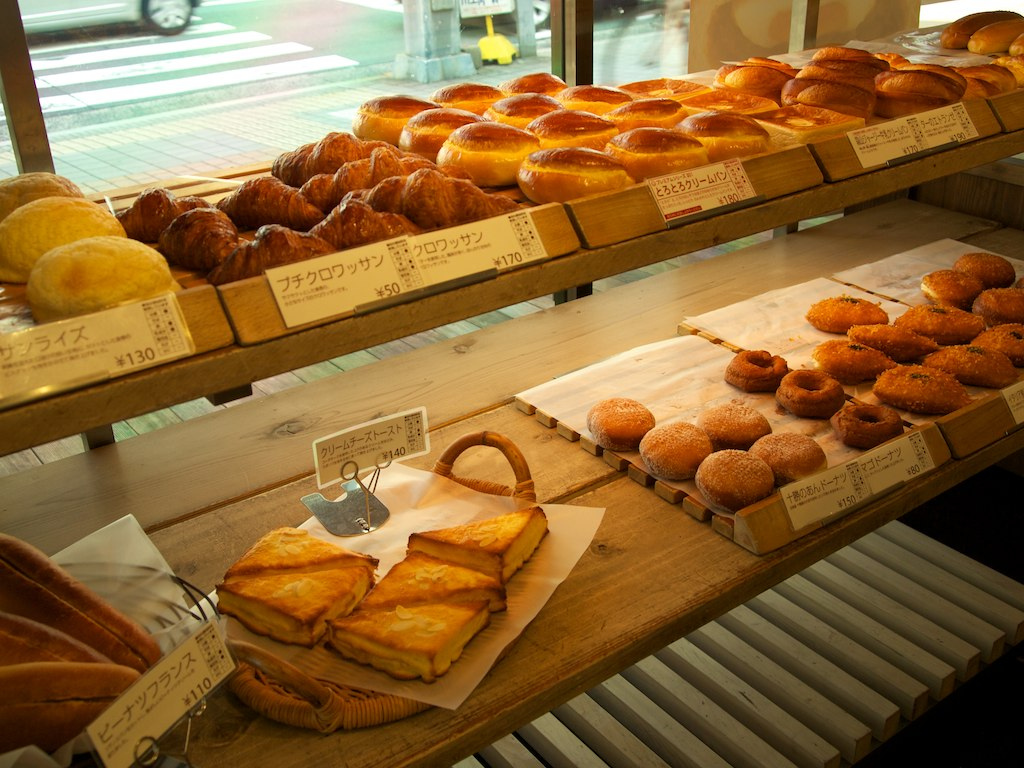
Japanese Bakery
It was early, so I sat by the rock garden for a while, relaxing and enjoying the light breeze of the morning, before gathering my things for the day and heading out. There were no restaurants obvious in the neighborhood, so I grabbed some pastries at the local Japanese bakery for breakfast then caught the bus to Kyoto Station.
Today my goal was the sake-brewing district of Fushimi, a small town known for its fine-quality water, an essential ingredient for making sake. Recently I have been enjoying various sake at home, so was looking forward to this excursion. I caught the train to Fushimi, and was surprised to see a picturesque area of old wooden buildings, not the huge factories that I had anticipated. It was interesting just to stroll through the neighborhood and look at the scenery. There was also a lovely, tree-lined river begging to be photographed.
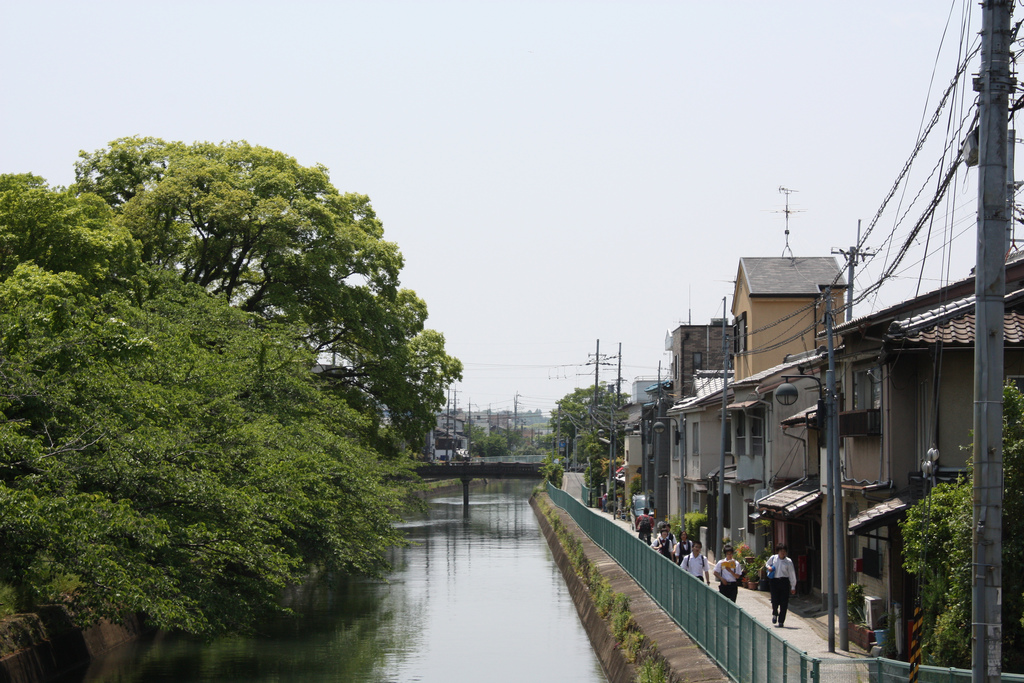
River near Fushimi Inari-taisha
My first stop was the Gekkeikan Okura Sake Museum. Located in one of the wood and stucco buildings, it was full of unusual tools used for making sake. There was cheerful music piped throughout, recreating the songs sung by brewers. It was interesting to hear and see.
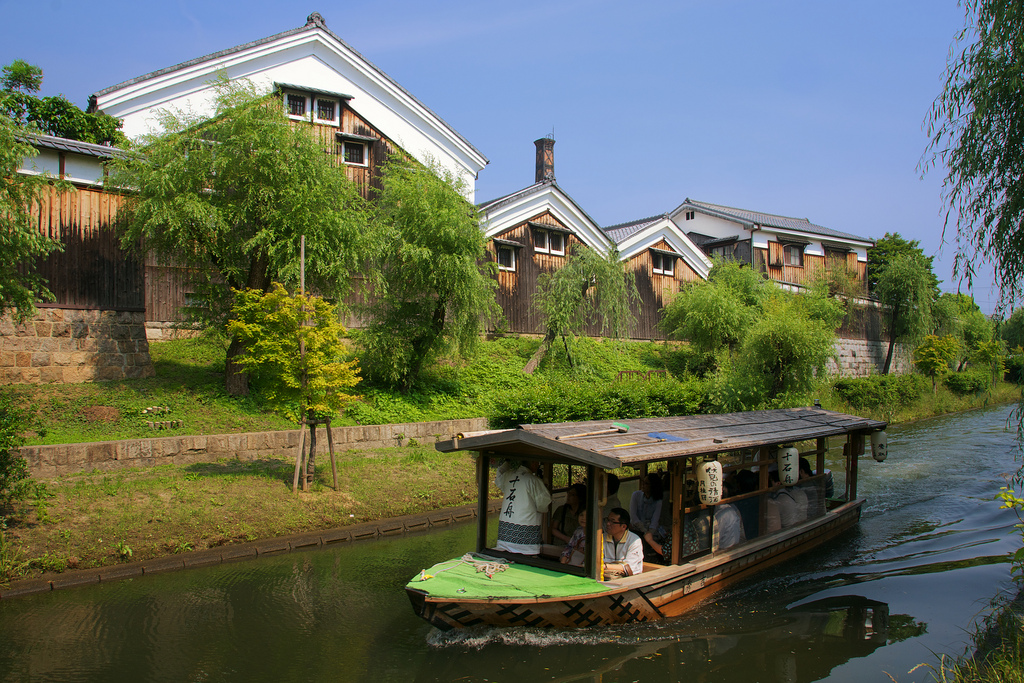
Gekkeikan sake brewery in Fushimi
Even more fun was tasting the sake afterwards. It was served quite cold, I found out that my vision of heated sake was a bit off. Poor quality ones are served that way to eliminate the acidity and bite, but high quality sake is served cold. I was impressed by the variety and excited that I could tell the difference in flavors for myself. Gekkeikan is a famous maker that I can buy back at home, but at the museum were special, limited-edition offerings as well.
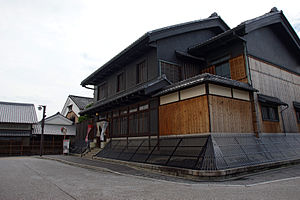
English: Gekkeikan in Fushimi, Kyoto, Kyoto prefecture, Japan 日本語: 月桂冠, 京都府京都市伏見区 (Photo credit: Wikipedia)
My next stop was the Yamamoto Honke brewery. This time, instead of a museum, I got a tour of a working sake factory, which was really interesting. There was not much activity because the brewing season was over, they said. However, after the tour I had a private class to make a raku sake cup. The teacher did not speak much English other than “like this” and “good, good!” However, that was part of the charm. I had been a bit wary of making reservations for this, thinking I might feel silly in a large class of tourists, but I am glad I tried. Sitting there together, getting my hands dirty in the clay, it seemed almost as meditative as the morning prayers in Myoren-ji.
I paid for them to ship the cup when the firing is done, since I will only be in Japan for one more day. I am looking forward to seeing the finished cup. At first I thought I might give it to my mother, but might keep it as a souvenir for myself to enjoy my own sake back home. I am not naturally an artistic person, so it is fun to see something I made myself.
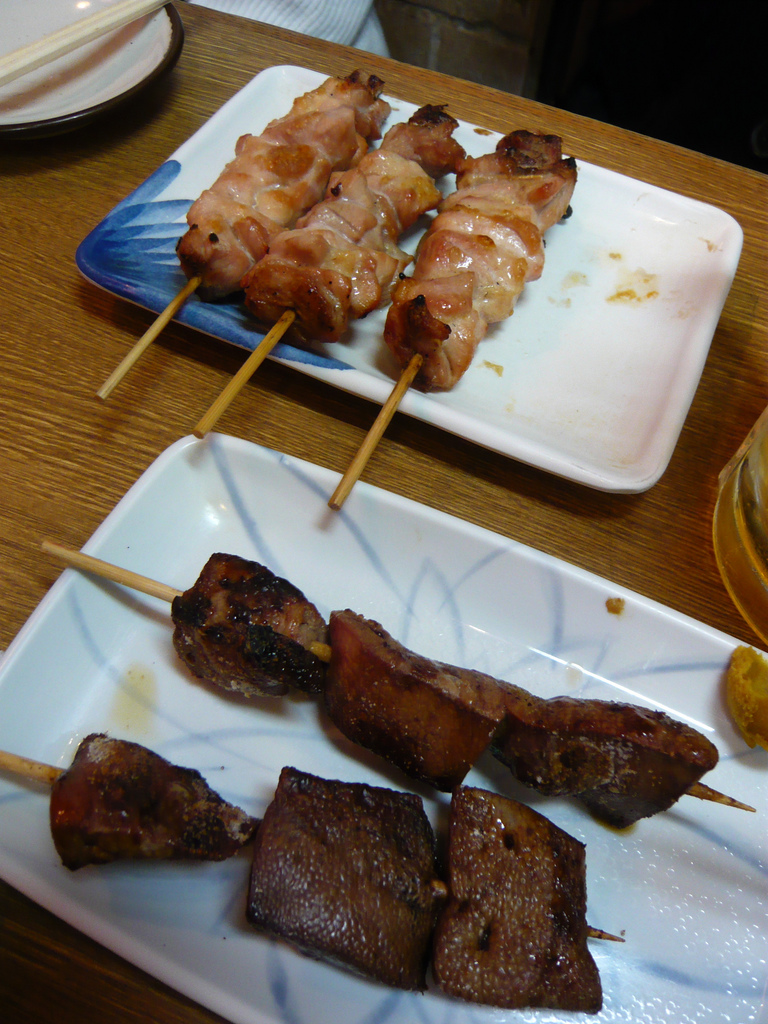
Chicken liver yakitori
By the time that was over, I was hungry and went to lunch at Shinsei Torisei, the restaurant right there inside the brewery. Considering I had not seen any other tourists in the area, I was surprised to find the restaurant packed. Everyone seemed to be from the neighborhood, and a couple guys with surprisingly good English invited me to share their table. They waved away the menu and ordered various skewers of chicken parts called yakitori. On my own, I am sure I would not have opted for liver or skin, but those turned out to be quite delicious. The grilled meat practically melted in my mouth, washed down with sake from the brewery.
We enjoyed lingering over the interlude together, and at the end exchanged business cards. I wonder if we really will be in contact again? I think it would be interesting to meet them the next time I have a business trip, so will send an email once I get home.
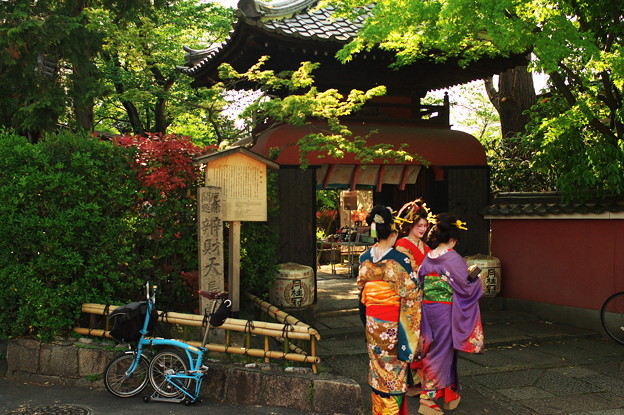
Choken-ji temple (photo credit: photozou.jp)
After leaving the restaurant my direction sense was a bit off, probably assisted by the sake, so I went by the Choken-ji temple which had a beautiful gate and two large sake casks on both sides of the Chinese-style tiled roof. I will try to visit next time if I am in the area though there are so many places to visit in Japan and Kyoto it is hard to plan these things!
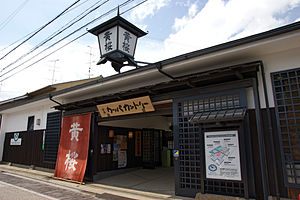
Kizakura Kappa Country Sake
My final stop in Fushimi was the Kizakura Kappa Sake Brewery. This time there was a self-guided tour, which was easy enough to follow. Again, there was a restaurant attached, but I did not feel like a meal, so opted to try one of the beers brewed there. Unfortunately, the beer was not the highest quality, though cold and refreshing in the hot afternoon. My favorite parts of this brewery ended up being the gardens, which were open to the public for free.
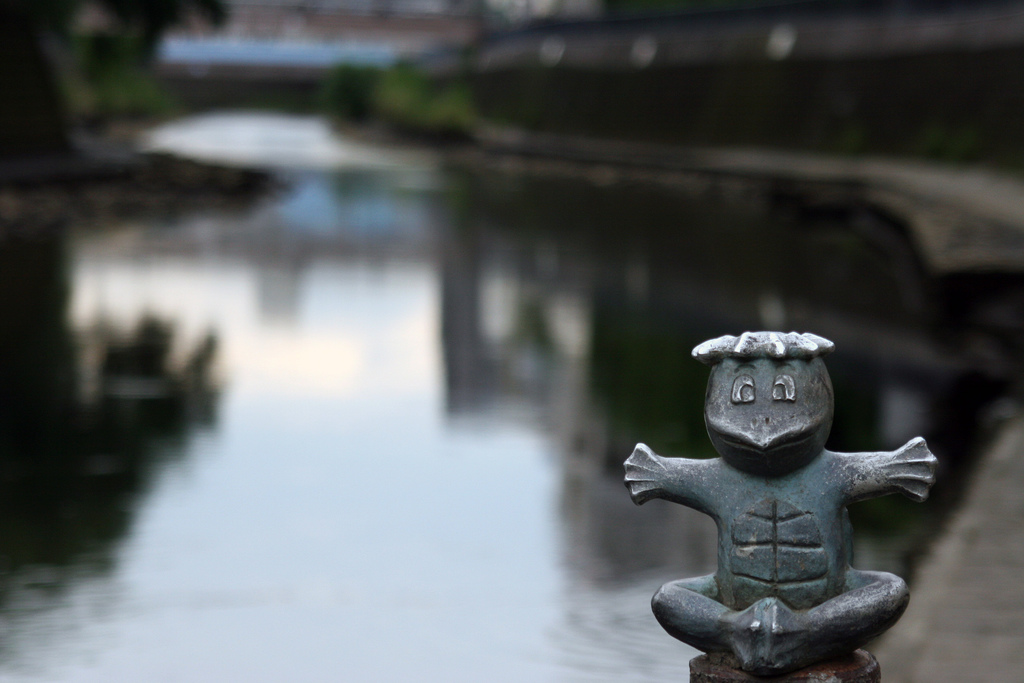
I saw the kappa
There was also a gallery which was fun to browse in, though I didn’t buy anything. It was dedicated to the Kappa, a mythological creature that lives in the water. The brewery name refers to it, maybe in an effort to gain the creature’s help? Kappa are notorious for doing all sorts of pranks, even bad things like drowning animals and children, so I can see why a company would want to appease them.
By that time it was approaching evening, and I thought it wise to head back to Kyoto. My plan was to buy some bento in the station, then eat it in my rooms after visiting the public baths. I needed to get up early in the morning, so it seemed like a good plan.
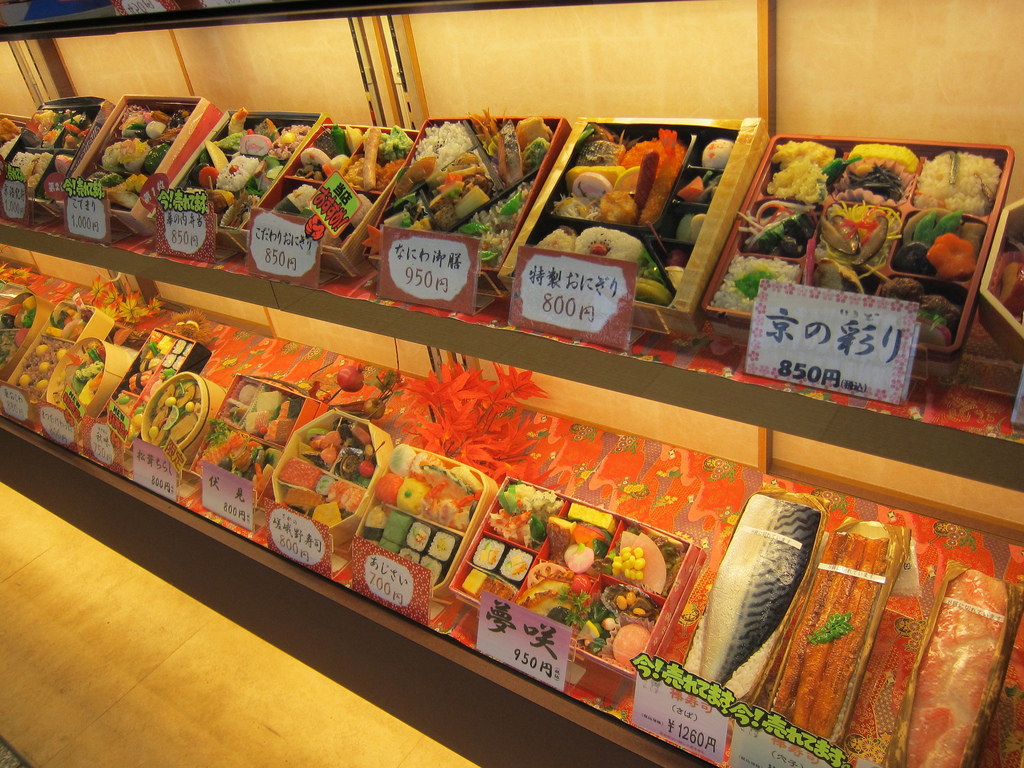
Kyoto Bento!
I ended up spending quite a long time in Porta, the underground mall in front of Kyoto Station. I don’t care about clothes and handbags, but when I was looking for my take-out food, I stumbled across a section that had regional souvenirs and gifts. Not plastic swords and T shirts, but quality handmade items. This was a good chance to pick up a gift for my mom, and some local snacks for the people in my office.
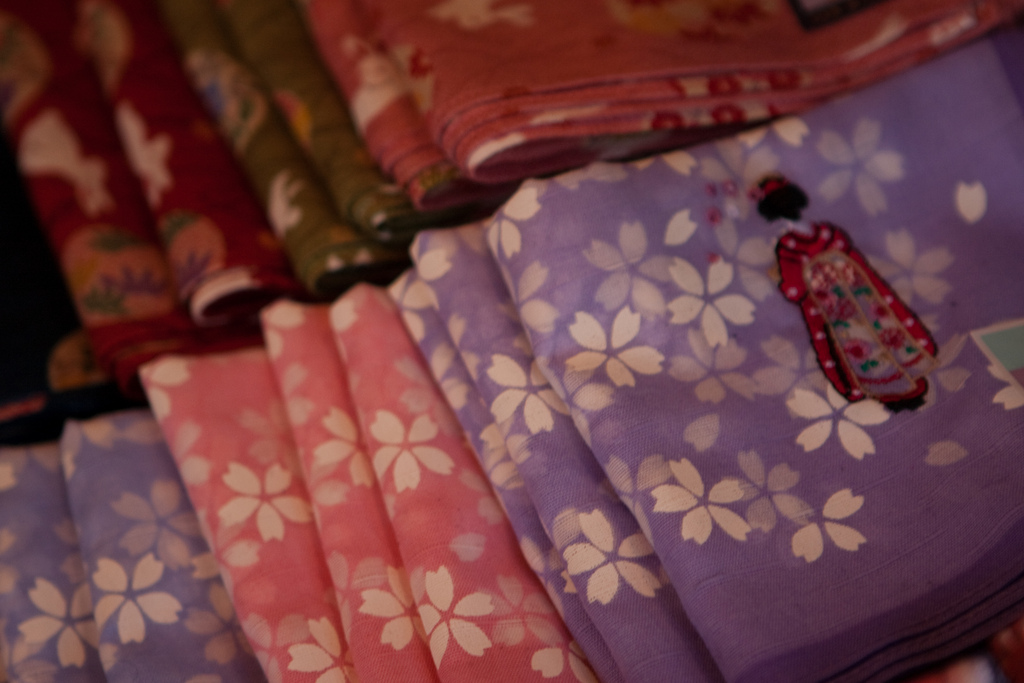
Beautiful fabric
Finally I made it back to Myoren-ji, had my bath under the watchful gaze of the same old men, and sat down with my dinner in my room. Yesterday was the Gion Matsuri, the ultimate tourist experience, and today I was the sole foreigner except at Kyoto Station itself. Both were excellent experiences, but they were quite a contrast.
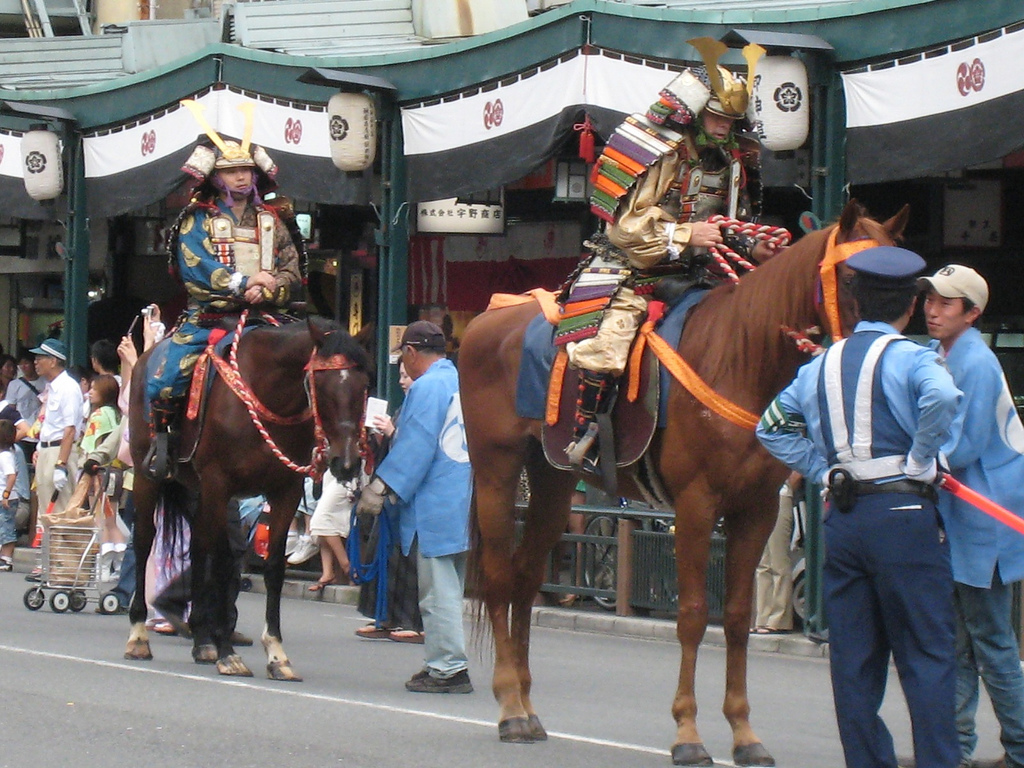
Kyoto samurai on horse
Tomorrow I leave Japan. It will be nice to return to my routine for a while, but I really look forward to another business trip. I hope to explore more places like I did today, places not seen by the average tourist.
 photos by:
jeremydeades &
Kyoto-Picture,
mhiguera,
MarkDoliner,
lensonjapan,
WordRidden,
OiMax,
majill,
beggs,
conbon33
photos by:
jeremydeades &
Kyoto-Picture,
mhiguera,
MarkDoliner,
lensonjapan,
WordRidden,
OiMax,
majill,
beggs,
conbon33